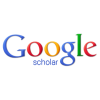Diğer
Araştırma Makalesi
Olgu Sunumu
Derleme
Amaç ve Kapsam
2016 yılında kurulan "Journal of Anatolian Environmental and Animal Sciences (JAES)" dergisi çevre ve hayvancılık bilimlerinin tüm yönlerini kapsayan konularda uluslararası hakemli bir dergi olup orijinal araştırma, inceleme veya derleme makaleleri ve kısa iletişim yazıları yayınlamaktadır. Dergi üç aylık dönemlerde İngilizce veya Türkçe olarak yılda 4 sayı halinde yayınlanmaktadır.
Dergimizde yayınlanacak yayınların konusunu Su, Karasal ve Atmosferik Ortam, Çevre Kirliliği, Balıkçılık ve Su Ürünleri, Biyoloji, Taksonomi ve Moleküler Biyoloji, Su Ürünleri Bilimi, Su Ürünleri Hastalıkları ve Genetiği, Oşinografi ve Balıkçılık Bilimi, Sucul Ekosistem ve Balıkçılık Yönetimi, Yaban Hayatı ve Balıkçılık, Tatlı Su, Acı Su ve Deniz Çevre Biyolojisi, Su Tasarrufu ve Sürdürülebilirlik, İç Suların Korunması ve Yönetimi, Deniz Ürünleri Teknolojisi ve Güvenliği, Su kalitesi ve kirliliği, Orman Ekolojisi ve Yönetimi, Orman Endüstrisi, Peyzaj ve Süs Bitkileri, Veterinerlik ve Hayvan Bilimleri, Tarım veya Ziraat ve Zootekni gibi araştırma alanları kapsamaktadır.
Yazım Kuralları
Journal of Anatolian Environmental and Animal Sciences (JAES)
MAKALE YAYINLAMA KURALLARI
1. Fen Bilimleri üzerine hakemli bilimsel yayın organı olup, Haziran, Ağustos ve Aralık aylarında olmak üzere yılda 3 kez elektronik olarak dergipark sisteminde online olarak yayınlanmaktadır. Derginin kısaltılmış ismi “JAES” dir.
2. Bu dergide yayınlanaçak olan makaleler Türkçe veya İngilizce dillerinden birinde hazırlanmış ve daha önce başka bir dergide yayınlanmamış veya başka bir dergiye eşzamanlı olarak sunulmamış olmalıdır. Bu dergideki yayınlanması planlanan makaleler Fen Bilimleri alanında, Türkiye'de ve dünyada yapılan biyoloji, çevre, tarım, ziraat, orman, su ürünleri ve hayvancılık ilgili konular üzerine yapılan araştırma çalışmaları hakkında kamuoyunu bilgilendirmek, güncel teknolojik gelişmeleri sektöre aktarmak, tarımsal ve hayvansal orjinli gıda hijyeni ve teknolojisi, egzotik hayvanlar bilimi ve laboratuvar hayvanları bilimi vs, diğer araştırma ve uygulama birimleri alanlarında hazırlanmış orijinal araştırma makalesi, vaka sunumu ve davetli veya editörün onayı alınmış derleme çalışmaları yayımlanır.
3. JAES Dergisi’nde yayımlanmak üzere gönderilen makalelerde deney hayvanı kullanılmış ise; makalenin Materyal ve Metot kısmında “Yerel Etik Kurulu onayı alınmıştır” veya “Yerel Etik Kurulu ilkelerine uyulmuştur” ifadesi mutlaka yer almalıdır. Yazar(lar); eğer yerel etik kurulu onayı alınmış ise etik kurul onayı aldıkları kurumu ve onay numarasını belirtmelidirler. Tez çalışmalarından özetlenen makalelerde ise etik kurul kararı aranmaz.
4. Yazarlar, başka kaynaklardan alınan ve kullanılan materyal ile ilgili telif hakkı şartlarına uymak ve telif hakkının dergiye devrini ifade eden sözleşmeyi imzalamakla yükümlüdürler. Dergide yer alan yazılardan doğacak her türlü sorumluluk makalenin yazar(lar)ına aittir.
5. Hayvanlarda İhbarı Mecburi Hastalıklar ile ilgili yapılan her türlü makalerin (Orjinal Araştırma Makalesi, Vaka Sunumu, Derleme) değerlendirmeye alınabilmesi için T.C. Gıda, Tarım ve Hayvancılık Bakanlığı’ndan alınmış izin yazısının Dergi Editörlüğüne sunulması zorunludur.
6. Makaleler değerlendirilmesi ilgili editör tarafından konusunda uzman en az iki hakemin danışmanlığına gönderilir. Makalenin yayına kabulü, ançak danışmanların ve dergi editörlüğünün kararına bağlıdır.
JAES MAKALE HAZIRLAMA ŞARTLARI
1. Makaleler, A4 kâğıdı ebatlarında 1.5 satır aralıklı olarak, kenarlarından 3 cm boşluk bırakarak yazılmalı, şekil, tablolar ve kaynaklarda dahil olmak üzere sayfa sayısı orijinal bilimsel araştırmalarda 16, vaka sunumlarında 6 ve derlemelerde 18 sayfayı geçmemelidir.
2. Makale, Microsoft Word yazılım ile Times New Roman karakterinde ve 12 punto ile hazırlanmalıdır.
3. Makaleye satır numaraları (makalenin 2. sayfasından başlamak üzere sürekli olacak şekilde) ve sayfa numaraları (sayfanın alt kısmında ve ortada) eklenmelidir.
4. Makale ile ilgili açıklayıcı bilgiler (tez, proje, vb.) makale başlığının sonuna köşeli parantez içinde üst simge olarak [*] işareti konulup anahtar kelimenin altında italik yazıyla açıklanmalıdır.
5. Araştırmaya konu olan maddelerin ve ürünlerin ticari adları kullanılmamalıdır.
Orijinal Bilimsel Araştırma Makaleler
Birinci Sayfa:
Makalenin birinci sayfası başlık, yazar isimleri ve adresleri, yazarların e-posta adresleri, sorumlu yazar (Fikri BALTA*) iletişim bilgileri ve eğer varsa makale ile ilgili açıklayıcı bilgiden oluşmalıdır ([*]) sembolü kullanılmalıdır (makalenin birinci sayfası için hazırlanmış örneği görmek için lütfen tıklayınız): Lütfen Derginin son sayısına bakınız (http://dergipark.org.tr/jaes).
Başlık: Türkçe ve İngilizce başlıklarda her kelimenin sadece ilk harfleri büyük olacak şekilde yazılmalıdır. Makalenin dili Türkçe ise önce Türkçe isim (özet kısmı Öz olarak ve anahtar kelimeler kısmı) sonra İngilizce başlık (abstract ve keysword), makalenin dili İngilizce ise önce İngilizce başlık ve ilgili başlıklar sonra Türkçe başlık ve ilgili başlıklar şeklinde yazılmalıdır.
Yazar İsimleri ve Adresleri: Yazar(lar)’ın adı (sadece baş harfleri büyük; Fikri) ve soyadının (hepsi büyük; BALTA) (akademik ünvansız) ve başlığın altına ortalı gelecek şekilde yazılmalıdır. Sorumlu yazar (*) ile işaretlenmeli, yazarların isminin sağ üst köşesine sayı eklenmeli ve bu sayılar adresler bölümünde kullanılmalıdır. Yazarların adresinde; bağlı olduğu kurum, birim, şehir ve ülke adı belirtilmelidir.
Yazarların e-posta Adresleri: Makalede ismi bulunan tüm yazarların ismi ve e-posta adresleri yazılmalıdır.
Sorumlu Yazar İletişim Bilgileri: Makalenin sorumlu yazarına ait adı-soyadı, e-posta, adres, telefon, GSM ve fax numaralarını içeren bilgiler yazılmalıdır.
Makale ile İlgili Açıklayıcı Bilgi: Eğer varsa makale ile ilgili açıklayıcı bilgiler (tez, proje vb.) birinci sayfanın sonunda dipnot olarak [*] işareti kullanılarak italik yazıyla açıklanmalıdır.
İkinci Sayfa:
Makalenin ikinci sayfası Türkçe özet ve anahtar kelimeler ile İngilizce özet ve anahtar kelimeleri içermelidir. Makale yazım dili Türkçe ise öncelikli olarak Türkçe özet ve anahtar kelimeler; eğer makale yazım dili İngilizce ise öncelikli olarak İngilizce özet ve anahtar kelimeler sunulmalıdır (Makalenin İkinci sayfası için hazırlanmış örneği görmek için lütfen tıklayınız): Lütfen Derginin son sayısına bakınız (https://dergipark.org.tr/jaes).
Özet (Abstract): Kısaca amaç, materyal, metot, bulgular ve sonuçları içermelidir. Özetlerde kullanılacak kelime sayısı 200-250 kelime arasında olmalıdır ve tek satır aralıklarla yazılmalıdır.
Anahtar kelimeler (Keywords): Anahtar kelimeler en fazla 6 adet olmalıdır. Türkçe ve İngilizce anahtar kelimeler kendi dillerindeki alfabetik sıraya göre sıralanmalıdır. Anahtar kelimeler arasına virgül (,) ve sonuncu anahtar kelimeden sonra nokta (.) işareti konulmalıdır.
Üçüncü Sayfa:
Makale üçüncü sayfadan itibaren GİRİŞ, MATERYAL ve METOT, BULGULAR, TARTIŞMA ve SONUÇ, TEŞEKKÜR (Gereki durumlarda) ve KAYNAKLAR bölümleri halinde tamamlanmalıdır. Bulgular ve tartışma birlikte verilebilir. Bölüm başlıkları büyük harflerle yazılmalıdır. Bölümlere ait alt başlıklar yalnız ilk harfleri büyük olacak şekilde yazılmalıdır. Tüm başlıklar koyu tonda ve 12 punto ile satırbaşı hizasında yazılmalıdır. İstatistiksel Analiz bilgileri:
Makalenin MATERYAL ve METOT bölümünün sonunda “İstatistiksel Analiz” başlığı altında verilmelidir.
Birimler ve Kısaltmalar: Her bir kısaltmanın açılımı metinde ilk geçtiği yerde verilmelidir. Birimler ve ölçülerde Uluslar Arası Standart birimleri (SI-sistem) kullanılmalıdır. Cins ve tür isimleri italik “Yersinia ruckeri” olarak yazılmalıdır. Makale içerisinde kullanılan rakamsal ve istatistiki verilerde Türkçe virgül (,), İngilizcede nokta (.) kullanılmalıdır örnek (Türkçe: 53,5; 0,25; % 91,9; P˂0,01; İngilizce: 61.2; 0.25; 98.9%, P˂0.01.)
Tablo ve Şekiller: Tablo isimleri ilgili tablonun üstünde, Şekil ise ilgili şeklin altına yazılmalıdır. Makeledeki grafik, fotoğraf ve resimler metin içerisinde ve başlıklarda Şekil olarak ifade edilmelidir. Şekil ve tablolar metin içerisindeki sırasına göre numaralandırılmalı ve metin içerisinde kısaltılmadan yazılmalıdır (Örn; Şekil 1, Tablo 1). Tablo ve şekiller makale içerisinde bulunması gereken bölümlere yerleştirilmeli, başlık ve açıklamaları da Türkçe ve İngilizce olarak eklenmelidir. Tablo ve şekillerde kullanılan her türlü kısaltma tablo ve şekil altında açıklanmalıdır.
Sonuç: Makaleye ait elde edilen/varılan sonuç, TARTIŞMA ve SONUÇ kısmının sonunda “sonuç olarak…“ ifadesiyle başlayan tek bir paragrafla belirtilmelidir.
Olgu Sunumlarını İçeren Makaleler
Birinci ve ikinci sayfalar orijinal bilimsel araştırma makaleleri kısmında anlatıldığı şekilde hazırlanmalıdır. Özetlerde kullanılacak kelime sayısı 120’den daha az olmamalı (150-200) ve tek satır aralıklarla yazılmalıdır.
Üçüncü sayfadan itibaren GİRİŞ, OLGU SUNUMU (olgu sunumu başlığı altında materyal, metot ve bulgulardan bahsedilmelidir) TARTIŞMA ve SONUÇ ve KAYNAKLAR şeklinde tamamlanmalıdır.
Olgu sunumu içerisinde eğer varsa İstatistiksel analiz bilgileri, birimler ve kısaltmalar, tablo ve şekiller bilimsel araştırma makaleleri kısmında anlatıldığı şekilde sunulmalıdır.
Olgu sunumuna ait elde edilen/varılan sonuç, TARTIŞMA ve SONUÇ kısmının sonunda “sonuç olarak…“ ifadesiyle başlayan tek bir paragrafla belirtilmelidir.
Derleme Makaleler
Birinci ve ikinci sayfalar orijinal bilimsel araştırma makaleleri kısmında anlatıldığı şekilde hazırlanmalıdır.
Derlemeler için hazırlanan özet derlemenin konusu hakkında bilgi ve 4 derlemenin amacından oluşmalıdır. Özetlerde kullanılacak kelime sayısı 200-250 arasında olmalıdır ve tek satır aralıklarla yazılmalıdır.
Derleme üçüncü sayfadan itibaren GİRİŞ ile başlamalı, yazar/lar tarafından belirlenecek ara başlıklarla devam etmeli, SONUÇ ve KAYNAKLAR ile tamamlanmalıdır.
Derleme içerisinde eğer varsa birimler ve kısaltmalar, tablo ve şekiller bilimsel araştırma makaleleri kısmında anlatıldığı şekilde sunulmalıdır.
Derlemeye ait sonuç, KAYNAKLAR bölümünden hemen önce SONUÇ başlığı altında belirtilmelidir.
Kaynakların Makalelerde Kullanılması
Dergimizde yayınlatılacak olan makalelerin kaynak yazımları için internet ortamında belirtilen apa stili 6. Sürüm-Dergipark kuralları dikkate alınarak yazılmalıdır. Kullanılan kaynak sayısı olgu sunumları için 10’dan az, araştırma makaleleri için 20’den az ve derlemeler için 40’dan fazla olmamalıdır. Makale türü ne olursa olsun (orijinal araştırma makalesi, olgu sunumu, derleme) kaynaklar aşağıda belirtildiği şekilde sunulmalıdır:
Metin içerisinde ise; Metin içerisinde birden fazla yazara atıf yapılan kaynaklarda yazarın soyadına göre alfabetik sırayla parantez içerisinde sıralanır; atıf yapılan makale Türkçe makalede: (Turan, 2012; Balta vd., 2016; Verep & Şahin, 2016;) şeklinde, atıf yapılan makale İngilizce makalede ise: (Balta et al., 2010; Dengiz Balta et al., 2017; Koral & Caglak, 2013; Porter, 2011) verilmelidir. Yazar isminin geçtiği yerlerde ise yazarın soyadı ve parantez içerisinde kaynağın tarihi verilir. Örneğin; Türkçe makalede: tek yazarlı; Verep, (2005) iki yazarlı; Şahin ve Ceylan, (2015) ikiden fazla yazarlı ise; Kayış vd., (2007) makale ingilizce yazılmış ise: tek yazarlıda Dalgıc, (2016); iki yazarlıda Kurtoglu and Sonay, (2016) ikiden fazla ise Gözler et al., (2016) şeklinde olduğu gibi yazılmalıdır.
Kaynaklar Bölümünde: Metin içerisinde kullanılan kaynaklar, makalenin kaynaklar bölümünde alfabetik sıraya göre sıralanmalıdır.
Kaynak dergi makaleri için; Yazarın Soyadı, Yazarın Adının Baş Harfleri. (Yıl, varsa ay). Makalenin adı yalnızca ilk kelimenin ilk harfi büyük, geri kalanlar özel isim değilse küçük şekilde. Derginin Adı İtalik ve Her Kelimenin İlk Harfi Büyük Şekilde, Cilt İtalik Şekilde(Sayı), Sayfa Numara Aralığı. doi: xxxxxx
Balta, F., Dengiz Balta, Z., Özgümüş, O.B. & Çağırgan, H. (2016). Doğu Karadeniz Bölgesi’ndeki gökkuşağı alabalığı (Oncorhynchus mykiss) çiftliklerinde Yersinia ruckeri’nin portörlük yönünden tetkiki ve antimikrobiyal direncin tespiti. Journal of Anatolian Environmental & Animal Sciences, 1(3), 72-76.
Balta, F., Sandalli, C., Kayis, S. & Ozgumus, O.B. (2010). Molecular analysis of antimicrobialresistance in Yersinia ruckeri strains isolated from rainbow trout (Oncorhynchus mykiss) grown in commercial fish farms in Turkey. Bulletin of the European Association of Fish Pathologists, 30(6), 211-219.
Turan, D. & Kaya, C. (2019). New record of Alburnoides kosswigi (Pisces: Leuciscidae) in the Ilgın lake basin. Journal of Anatolian Environmental & Animal Sciences, 4(1), 39-42. Doi: 10.35229/jaes.529905
Dengiz Balta, Z., Akhan, S. & Balta, F. (2017). The physiological stress response to acute thermal exposure in Black Sea trout (Salmo trutta labrax Pallas, 1814). Turkish Journal of Veterinary & Animal Sciences, 41, 400-406. Doi:10.3906/vet-1606-32
Kaynak kitap ise; Kitap adları başlığın ilk harfinden sonra (özel adlar dışında) bütünüyle küçük ve eğik harflerle yazılır.
Austin, B. & Austin, DA. (1999). Bacterial fish pathogens: Disease of farmed and wild fish, 3rd ed., Springer-Praxis, Chichester, UK, 457p.
Kaynak kitapta bir bölüm ise;
Elston, R. (1989). Fish viruses, In: Austin, B. & Austin, D.A. (Ed), Methods for the microbiological examination of fish and shellfish, 1st ed., 216-239p, Ellis Horwood Ltd., Chichester, UK.
Kaynak bir tez ise;
Balta, F. (1999). Levrek (Dicentrarchus labrax L.1758) balıklarında sağaltım sonrası oksitetrasiklin rezidüsünün belirlenmesi. Ege Üniversitesi Fen Bilimleri Enstitüsü. Bornova-İzmir, Türkiye, 93s.
Kaynak Sempozyumda Bildiri veya Poster ise;
Balta, F. (1997). Kültürü yapılan alabalıklarda (Oncorhyncus mykiss) görülen Flexibacter psychrophila enfeksiyonu. IX. Ulusal Su Ürünleri Sempozyumu, 19 Eylül 1997, Eğirdir-Isparta, Türkiye, 621-648.
Kaynak bir kuruluşun yayını ise;
CLSI. (2014). Performance standards for antimicrobial susceptibility testing; Twenty-Fourth Informational Supplement. Clinical Laboratory Standards Institute, Wayne, USA, M100-S24, 230p.
İnternet kaynakları ise
Yazarın Soyadı, Yazarın Adının Baş Harfleri. (Yazının yayım tarihi). Yazının adı italik olarak, yalnızca ilk kelimenin ilk harfi büyük, geri kalanlar özel isim değilse küçük şekilde. Erişim tarihi: Gün Ay Yıl, yazının linki.
Kaynak bir yazılım ise;
SAS. (1990). SAS user’s guide: Statistics, 4th ed., Sas Institute, Cary.
Web tabanlı: Kaynak internette yer alıyor ise erişim tarihi ile birlikte yazılmalıdır.
Drancourt, M., Bollet, C., Calioz, A., Martelin, R., Gayral, J. & Raoutt, D. (2000). 16s Ribosomal DNA sequence analysis of a large collection of environmental and clinical an identifiable bacterial isolates. http://www.server.com /projects/paper2.html. (10 Nisan 2016).
NOT: Yazım kuralları için Lütfen dergimizin son sayısına (https://dergipark.org.tr/jaes) veya Apa Stili 6. Sürüm (https://dergipark.org.tr/uploads/files/4d53/3a73/0e3c/572f7df1cee3c.pdf) bakınız.
MAKALENİN GÖNDERİLMESİ
Makale online sistem (http://dergipark.org.tr/), veya dergi e-postaları aracılığıyla ( ) yada yazılı doküman halinde dergi editörlüğüne ulaştırılabilir.
Orjinal makale ve Tablolar. doc uzantılı olmalıdır.
Şekiller (grafik, fotoğraf, şekiller ve resim) JPEG formatında 300 DPI çözünürlükte ayrı dosya halinde gönderilmelidir.
DERGİ BASKISI
Baskı aşamasına gelen makalelere sayı ve sayfa numarası verildikten sonra en kısa sürede dergimize ait WEB alanına eklenerek dijital olarak yayınlanacaktır. Kabul edilen çalışmalar abonelik sistemine göre yayınlanacaktır. Dergimize abone olacak yazarlarımız Standart, Silver, Gold ve Platin abonelik türlerinden birini seçmelidirler. 2021 yılı için abonelik ücretleri standart için 250 TL (herhangi bir sayıda 1 adet makale), silver için 500 (her bir sayıda 2 adet makale), gold için 750 (3 sayıda 3 adet makale) ve platin için ise 1000 (tüm sayılarda 4 adet) olarak belirlenmiştir. Abone olmak için burada verilen banka hesabına ilgili abonelik bedeli yatırıldıktan sonra havale veya eft makuzunun görselini ve makbuz nosunu jaes-tr@hotmail.com mailine göndermeniz yeterlidir. Banka bilgileri: Hesap adı: Karakoyunlu Kültür Tanıtma ve Dayanışma Derneği, Banka Hesabı IBAN Numarası: TR 0500 0590 1680 1301 6800 8378 (Şekerbank Rize Şubesi). Standart tür aboneler yılda bir sayıda 1 makale, Silver abonelerimiz yıl içerisinde yayınlanan sayılarda en fazla 2, Gold türü abonelerimiz ise yine yıl içerisinde yayınlanan sayılarda 3 makale ve Platin üyeler ise yıl içersinde her sayıda 1 adet veya farklı şekillerde toplam 4 adet makale yayınlayabilirler. Dergimize yayın gönderen yazarlarımızın yazıları abonelik durumlarına bakılmaksızın değerlendirilir, ancak önkontrol süreci sonucunda abonelik süreçleri tamamlanmış olmalıdır, aksi durumda hakem değerlendirme süreci başlatılmayacaktır. Aboneliği gerçekleştirilmiş taslaklar hakem değerlendirme sürecine alınır. Hakem değerlendirme sürecinden başarıyla geçen ve yayına kabul edilen makale taslakları yazarlarından en az birinin dergimiz abonesi olması gerekmektedir. Makale taslağının 1. yazarı veya başlıca yazarı dergimiz editörüyse abonelik yapılmasına gerek yoktur. Dergimize abone olunması yayına gönderilen yazıların yayınlanmasını garanti etmez, mutlaka ön kontrol ve hakem süreçlerini başarıyla tamamlaması gereklidir. Yazarlarımız makale taslaklarını ancak önkontrol sürecinde geri çekebilirler, hakem değerlendirme sürecine alınmış taslaklarla ilgili geri çekme talepleri dilekçeli başvuru sonrası Dergi Yayın Kurulu tarafından değerlendirilerek işlemleri yapılır.
Etik İlkeler ve Yayın Politikası
This statement is based on COPE’s Best Practice Guidelines for Journal Editors, Guidance from the Committee on Publication Ethics (COPE). We accept all terms and conditions of COPE about plagiarism and in case, any attempt of plagiarism is brought to our attention accompanied by convincing evidence, we act based on flowcharts and workflows determined in COPE. The production of an article in an associate audited journal is a fundamental building hinder in the improvement of a rational and regarded system of information. It is an immediate impression of the nature of crafted by the creators and the organizations that help them. Associate evaluated articles support and encapsulate the logical technique. It is subsequently imperative to heaps of expected moral conduct for all gatherings associated with the demonstration of distributing: the creator, the journal manager, the companion commentator, the distributor, and the general public of society-claimed or supported journals. All submissions will be checked with plagiarism software in 2 stages: New Submission and After Acceptance from the editorial boards.
Latest statistics of the manuscript publication process:
Evaluation period (Elapsed time between post and decision of a paper) 90-150 days
Early publication time (Elapsed time between post and early publication of a paper) 90-150 days
Publication time (Elapsed time between post and publication of a paper) 120-150 days
Journal of Anatolian Environmental and Animal Sciences (JAES) as a member of Anatolian Academic Sciences (AAS), co-published by TUBİTAK ULAKBIM DERGIPARK and DERGI PLATFORM, is committed to apply ethics of publication, based on the COPE’s Code of Conduct and Best Practices. You may find the journal’s code of publication ethics, here.
Journal of Anatolian Environmental and Animal Sciences (JAES) aims to be a main channel of data communication, sharing of ideas and information to the scientific researching community. It is mandatory for us to follow certain code of ethics and it is advices to adhere strictly to the following code of ethics, which will enhance the quality of the published works heavily. This currently written code of ethics is focusing to provide guidance on the proper behavior of editors, authors and reviewers in the process of scientific publication.
Journal of Anatolian Environmental and Animal Sciences (JAES) is committed to follow and apply “International Standards for Authors” of Committee on Publication Ethics in designing and leading the Journal’s reviewing and publishing process and dealing with their issues. You may find the International Standards for Authors, here. Authors should read the standard and apply it on their works, completely. Authors submitting a paper confirm that the understanding that the manuscript have been read and approved by all authors and that all authors agree to the submission of the manuscript to the Journal. In addition, authors are advised to follow the following code of ethics strictly Submit manuscripts, which are their originals works or of the work, they are associated with during their tenure.
Submitted manuscripts should contain original and new results, data, and their ideas, which are not submitted for publishing to other publications or published elsewhere. Fabrication of data and results, intellectual property theft and plagiarism are highly unacceptable, it is beyond the ethics of an author. Information obtained via various media should be provided in the manuscript only with prior permission from the owner of the source of information or data. They should properly cite the work they are referring; authors are advised to crosscheck the reference before submission of manuscript. They may not promote in any form via any media to get their works published. No article should have an author who is not directly involved in the work for any means or reasons.
Authors and co-authors are requested to review and ensure the accuracy and validity of all the results prior to submission. Any potential conflict of interest should be informed to the editor in advance. Authors are bound by the Creative Commons licensing policy of publication. All authors are requested to submit the copyright transfer form without failure once they receive the acceptance of their article for publication.
Journal of Anatolian Environmental and Animal Sciences (JAES) is committed to follow and apply “International Standards for Editors” of Committee on Publication Ethics in designing and leading the Journal’s reviewing and publishing process and dealing with their issues. You may find the International Standards for Editors, here. The journal's editors should read the standard and apply it in their editorial tasks and procedures, completely.
The term editor is a common terminology used to refer Chief Editor of any journal, Content editor, Section Editor (An expert who is the manager of reviewing process in a subject centered section), and Editorial board members. Editors of the JAES are insisted to have full responsibility for editorial and technical decisions of the journal. Any editor or office bearer should not intervene or give comment on any editorial decisions taken on any manuscript by the concerned editor. Editors are requested to give unbiased considerations for the articles submitted. JAES aims for rapid publication, editors are advised to process the manuscripts promptly and diligently.
Editors are the sole responsible persons for the acceptance or rejection of a manuscript, it may be subjected to peer review but the final decision is bound to the concerned editor. Any decision taken or matter of concern about a submitted article should not be revealed to anyone by an editor. If one of the editor is willing to publish an article the article should be processed by another editor. Editor should refrain from using the information, data, theories, or interpretations of any submitted manuscript in her/his own work until that manuscript is in press.
Reviewers are the main members contributing for the benefit of the journal being a peer reviewed (double-blind review) journal they are insisted not to disclose their identity in any form.
A reviewer should immediately decline to review an article submitted if he/she feels that the article is technically unqualified or if the timely review cannot be done by him/her or if the article has a conflict of interest. All submissions should be treated as confidential, editorial approval might be given for any outside person’s advice received. No reviewer should pass on the article submitted to him/her for review to another reviewer in his own concern, it should be declined immediately. Reviewers being the base of the whole quality process should ensure that the articles published should be of high quality and original work. He may inform the editor if he finds the article submitted to him for review is under consideration in any other publication to his/her knowledge.
There are no hard and fast rules to analysis an article, this can be done on case-to-case basis considering the worthiness, quality, and originality of the article submitted.
In general, cases the following may be checked in a review
· Structure of the article submitted and its relevance to author guidelines
· Purpose and Objective of the article
· Method of using transitions in the article
· Introduction given and the conclusion/ suggestions provided
· References provided to substantiate the content
· Grammar, punctuation and spelling · Plagiarism issues
· Suitability of the article to the need
A reviewer’s comment decides the acceptance or rejection of an article and they are one major element in a peer review process. All our reviewers are requested to go through the articles submitted to them for review in detail and give the review comments without any bias, which will increase the quality of our journals.
Being an association dedicated for the researcher fraternity, we all should ensure that the code of ethics formed is followed in all possible ways. Being a not-for-profit body it is the internal responsibility of a person whom should have to follow the codes, there is no enforcement to follow.
COPE’s Guidelines & Flowcharts
Journal of Anatolian Environmental and Animal Sciences is committed to follow and apply guidelines and flowcharts of Committee on Publication Ethics in its reviewing and publishing process and issues.
COPE’s Code of Conduct and Best Practices
1. Editors
Chief Editors is accountable for everything published in the journal. This means the editors
1.1 strive to meet the needs of readers and authors;
1.2 strive to constantly improve their journal;
1.3 have processes in place to assure the quality of the material they publish;
1.4 champion freedom of expression;
1.5 maintain the integrity of the academic record;
1.6 preclude business needs from compromising intellectual and ethical standards;
1.7 always be willing to publish corrections, clarifications, retractions and apologies when needed.
Best Practice for Editors would include actively seeking the views of authors, readers, reviewers and editorial board members about ways of improving their journal’s processes encouraging and being aware of research into peer review and publishing and reassessing their journal’s processes in the light of new findings supporting initiatives designed to reduce research and publication misconduct supporting initiatives to educate researchers about publication ethics assessing the effects of their journal policies on author and reviewer behavior and revising policies, as required, to encourage responsible behavior and discourage misconduct ensuring that any press releases issued by their journal reflect the message of the reported article and put it into context.
2. Readers
Readers should be informed about who has funded research or other scholarly work and whether the funders had any role in the research and its publication and, if so, what this was.
Best practice for editors would include: Ensuring that all published reports and reviews of research have been reviewed by suitably qualified reviewers including statistical review, ensuring that non-peer-reviewed sections of their journal are clearly identified, adopting processes that encourage accuracy, completeness and clarity of research reporting including technical editing and the use of appropriate guidelines and checklists, considering developing a transparency policy to encourage maximum disclosure about the provenance of non-research articles, adopting authorship or contributorship systems that promote good practice (i.e. so that listings accurately reflect who did the work) and discourage misconduct (e.g. ghost and guest authors)
3. informing readers about steps taken to ensure that submissions from members of the journal’s staff or editorial board receive an objective and unbiased evaluation
4. Relations with authors
4.1 Editors’ decisions to accept or reject a paper for publication should be based on the paper’s importance, originality and clarity, and the study’s validity and its relevance to the remit of the journal.
4.2 Editors should not reverse decisions to accept submissions unless serious problems are identified with the submission.
4.3 New editors should not overturn decisions to publish submissions made by the previous editor unless serious problems are identified.
4.4 A description of peer review processes should be published, and editors should be ready to justify any important deviation from the described processes.
4.5 Journals should have a declared mechanism for authors to appeal against editorial decisions.
4.6 Editors should publish guidance to authors on everything that is expected of them. This guidance should be regularly updated and should refer or link to this code.
4.7 Editors should provide guidance about criteria for authorship and/or who should be listed as a contributor following the standards within the relevant field.
Best practice for editors would include: Reviewing author instructions regularly and providing links to relevant guidelines, publishing relevant competing interests for all contributors and publishing corrections if competing interests are revealed after publication, ensuring that appropriate reviewers are selected for submissions (i.e. individuals who are able to judge the work and are free from disqualifying competing interests), respecting requests from authors that an individual should not review their submission, if these are well-reasoned and practicable, publishing details of how they handle cases of suspected misconduct, publishing submission and acceptance dates for articles.
5. Relations with reviewers
5.1 Editors should provide guidance to reviewers on everything that is expected of them including the need to handle submitted material in confidence. This guidance should be regularly updated and should refer or link to this code.
5.2 Editors should require reviewers to disclose any potential competing interests before agreeing to review a submission.
5.3 Editors should have systems to ensure that peer reviewers’ identities are protected unless they use an open review system that is declared to authors and reviewers.
Best practice for editors would include: Encouraging reviewers to comment on ethical questions and possible research and publication misconduct raised by submissions (e.g. unethical research design, insufficient detail on patient consent or protection of research subjects (including animals), inappropriate data manipulation and presentation), encouraging reviewers to comment on the originality of submissions and to be alert to redundant publication and plagiarism, considering providing reviewers with tools to detect related publications (e.g. links to cited references and bibliographic searches), sending reviewers’ comments to authors in their entirety unless they contain offensive or libelous remarks, seeking to acknowledge the contribution of reviewers to the journal, encouraging academic institutions to recognize peer review activities as part of the scholarly process, monitoring the performance of peer reviewers and taking steps to ensure this is of high standard, developing and maintaining a database of suitable reviewers and updating this on the basis of reviewer performance, ceasing to use reviewers who consistently produce discourteous, poor quality or late reviews, ensuring that the reviewer database reflects the community for their journal and adding new reviewers as needed, using a wide range of sources (not just personal contacts) to identify potential new reviewers (e.g. author suggestions, bibliographic databases), following the COPE flowchart in cases of suspected reviewer misconduct.
6. Relations with editorial board members
6.1 Editors should provide new editorial board members with guidelines on everything that is expected of them and should keep existing members updated on new policies and developments.
Best practice for editors would include: Having policies in place for handling submissions from editorial board members to ensure unbiased review, identifying suitably qualified editorial board members who can actively contribute to the development and good management of the journal, regularly reviewing the composition of the editorial board, providing clear guidance to editorial board members about their expected functions and duties, which might include: acting as ambassadors for the journal, supporting and promoting the journal, seeking out the best authors and best work (e.g. from meeting abstracts) and actively encouraging submissions, reviewing submissions to the journal, accepting commissions to write editorials, reviews and commentaries on papers in their specialist area, attending and contributing to editorial board meetings, consulting editorial board members periodically (e.g. once a year) to gauge their opinions about the running of the journal, informing them of any changes to journal policies and identifying future challenge.
7. Relations with AAS
7.1 The relationship of editors to AAS and the owner is based firmly on the principle of editorial independence.
7.2 Editors should make decisions on which articles to publish based on quality and suitability for the journal and without interference from AAS.
7.3 Editors have a written contract(s) setting out their relationship with AAS.
7.4 The terms of this contract is in line with the COPE Code of Conduct for Journal Editors.
Best practice for editors would include: Communicating regularly with AAS
8. Editorial and peer review processes
8.1 Editors should strive to ensure that peer review at their journal is fair, unbiased and timely.
8.2 Editors should have systems to ensure that material submitted to their journal remains confidential while under review.
Best practice for editors would include: ensuring that people involved with the editorial process (including themselves) receive adequate training and keep abreast of the latest guidelines, recommendations and evidence about peer review and journal management, keeping informed about research into peer review and technological advances, adopting peer review methods best suited for their journal and the research community it serves, reviewing peer review practices periodically to see if improvement is possible, referring troubling cases to COPE, especially when questions arise that are not addressed by the COPE flowcharts, or new types of publication misconduct are suspected, considering the appointment of an ombudsperson to adjudicate in complaints that cannot be resolved internally.
9. Quality assurance
9.1 Editors should take all reasonable steps to ensure the quality of the material they publish, recognizing that journals and sections within journals will have different aims and standards.
Best practice for editors would include: Having systems in place to detect falsified data (e.g. inappropriately manipulated photographic images or plagiarised text) either for routine use or when suspicions are raised, basing decisions about journal house style on relevant evidence of factors that raise the quality of reporting (e.g. adopting structured abstracts, applying guidance) rather than simply on aesthetic grounds or personal preference.
10. Protecting individual data
10.1 Editors must obey laws on confidentiality in their own jurisdiction. Regardless of local statutes, however, they should always protect the confidentiality of individual information obtained in the course of research or professional interactions. It is therefore almost always necessary to obtain written informed consent for publication from people who might recognize themselves or be identified by others (e.g. from case reports or photographs). It may be possible to publish individual information without explicit consent if public interest considerations outweigh possible harms, it is impossible to obtain consent and a reasonable individual would be unlikely to object to publication.
Best practice for editors would include: Publishing their policy on publishing individual data (e.g. identifiable personal details or images) and explaining this clearly to authors, Note that consent to take part in research or undergo treatment is not the same as consent to publish personal details, images or quotations.
11. Encouraging ethical research (e.g. research involving humans or animals)
11.1 Editors should endeavour to ensure that research they publish was carried out according to the relevant internationally Declaration of Helsinki for clinical research, and the AERA and BERA guidelines for educational research.
11.2 Editors should seek assurances that all research has been approved by an appropriate body (e.g. research ethics committee, institutional review board) where one exists. However, editors should recognize that such approval does not guarantee that the research is ethical.
Best practice for editors would include: Being prepared to request evidence of ethical research approval and to question authors about ethical aspects (such as how research participant consent was obtained or what methods were employed to minimize animal suffering) if concerns are raised or clarifications are needed, ensuring that reports of clinical trials cite compliance with the Declaration of Helsinki, Good Clinical Practice, appointing a journal ethics advisor or panel to advise on specific cases and review journal policies periodically.
12. Dealing with possible misconduct
12.1 Editors have a duty to act if they suspect misconduct or if an allegation of misconduct is brought to them. This duty extends to both published and unpublished papers.
12.2 Editors should not simply reject papers that raise concerns about possible misconduct. They are ethically obliged to pursue alleged cases.
12.3 Editors should follow the COPE flowcharts where applicable.
12.4 Editors should first seek a response from those suspected of misconduct. If they are not satisfied with the response, they should ask the relevant employers, or institution, or some appropriate body (perhaps a regulatory body or national research integrity organization) to investigate.
12.5 Editors should make all reasonable efforts to ensure that a proper investigation into alleged misconduct is conducted; if this does not happen, editors should make all reasonable attempts to persist in obtaining a resolution to the problem. This is an onerous but important duty.
13. Ensuring the integrity of the academic record
13.1 Errors, inaccurate or misleading statements must be corrected promptly and with due prominence.
13.2 Editors should follow the COPE guidelines on retractions.
Best practice for editors would include: Taking steps to reduce covert redundant publication (e.g. by requiring all clinical trials to be registered)
ensuring that published material is securely archived (e.g. via online permanent repositories, such as PubMed Central), having systems in place to give authors the opportunity to make original research articles freely available.
14. Intellectual property
14.1 Editors should be alert to intellectual property issues and work with Negah Publisher to handle potential breaches of intellectual property laws and conventions.
Best practice for editors would include: Adopting systems for detecting plagiarism (e.g. software, searching for similar titles) in submitted items (either routinely or when suspicions are raised), supporting authors whose copyright has been breached or who have been the victims of plagiarism, being prepared to work with Negah Publisher to defend authors’ rights and pursue offenders (e.g. by requesting retractions or removal of material from websites) irrespective of whether their journal holds the copyright.
15. Encouraging debate
15.1 Editors should encourage and be willing to consider cogent criticisms of work published in their journal.
15.2 Authors of criticized material should be given the opportunity to respond.
15.3 Studies reporting negative results should not be excluded.
Best practice for editors would include: Being open to research that challenges previous work published in the journal.
16. Complaints
16.1 Editors should respond promptly to complaints and should ensure there is a way for dissatisfied complainants to take complaints further. This mechanism should be made clear in the journal and should include information on how to refer unresolved matters to COPE.
16.2 Editors should follow the procedure set out in the COPE flowchart on complaints.
17. Commercial considerations
17.1 Journals should have policies and systems in place to ensure that commercial considerations do not affect editorial decisions (e.g. advertising departments should operate independently from editorial departments).
17.2 Editors should have declared policies on advertising in relation to the content of the journal and on processes for publishing sponsored supplements.
17.3 Reprints should be published as they appear in the journal unless a correction needs to be included in which case it should be clearly identified.
Best practice for editors would include: Publishing a general description of their journal’s income sources (e.g. the proportions received from display advertising, reprint sales, sponsored supplements, page charges, etc.), ensuring that the peer review process for sponsored supplements is the same as that used for the main journal, ensuring that items in sponsored supplements are accepted solely on the basis of academic merit and interest to readers and decisions about such supplements are not influenced by commercial considerations.
18. Conflicts of interest
18.1 Editors should use COPE/JAES form and procedure for managing the conflicts of interest issues.
18.2 Journals should have a declared process for handling submissions from the editors, employees or members of the editorial board to ensure unbiased review.
Ücret Politikası
Dergimiz açık erişimli bir dergi olduğu için abonelik sistemiyle ücretlendirme yapmaktadır. Dergimize abone olacak yazarlarımız Standart, Silver, Gold ve Platin abonelik türlerinden birini seçmelidirler. 2022 yılı için abonelik ücretleri standart için 400 TL, silver için 700, gold için 1000 ve platin için ise 1250 olarak belirlenmiştir. Abone olmak için burada verilen banka hesabına ilgili abonelik bedeli yatırıldıktan sonra havale veya eft makbuzunun görselini ve makbuz nosunu jaes-tr@hotmail.com mailine göndermeniz yeterlidir. Banka bilgileri-Hesap adı: Karakoyunlu Kültür Tanıtma ve Dayanışma Derneği, Banka Hesabı IBAN Numarası: TR 0500 0590 1680 1301 6800 8378 (Şekerbank Rize Şubesi). Standart tür aboneler yılda bir sayıda 1 makale, Silver abonelerimiz yıl içerisinde yayınlanan sayılarda en fazla 2, Gold türü abonelerimiz ise yine yıl içerisinde yayınlanan sayılarda 3 makale ve Platin üyeler ise yıl içerisinde her sayıda 1 adet veya farklı şekillerde toplam 4 adet makale yayınlayabilirler. Dergimize yayın gönderen yazarlarımızın yazıları abonelik durumlarına bakılmaksızın ücretsiz olarak değerlendirilir, ancak ön kontrol süreci sonucunda abonelik süreçleri tamamlanmış olmalıdır, aksi durumda hakem değerlendirme süreci başlatılmayacaktır. Aboneliği gerçekleştirilmiş taslaklar hakem değerlendirme sürecine alınır. Hakem değerlendirme sürecinden başarıyla geçen ve yayına kabul edilen makale taslakları yazarlarından en az birinin dergimiz abonesi olması gerekmektedir. Makale taslağının sorumlu yazarı dergimiz ana editörü veya Yazım ve Dil Kuralları editörüyse 1.yayında abonelik yapılmasına gerek yoktur, 2. ve daha sonraki yayınlarda yüzde 50 indirim uygulanır. Alan editörlerimiz ise makale yayınlama durumunda sorumlu yazar iseler yüzde 50 indirimle abone olabileceklerdir. Dergimize abone olunması yayına gönderilen yazıların yayınlanmasını garanti etmez, mutlaka ön kontrol ve hakem süreçlerini başarıyla tamamlaması gereklidir.
Dizinler
Atıf Dizinleri
Diğer Dizinler
Dergi Kurulları
Baş Editör







 Web
Web
Baş Editör Yardımcıları






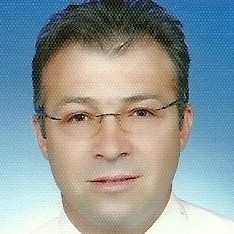






 Web
Web
Ana Editörler



 Web
Web
Doktora derecesini de aldığı, Karadeniz Teknik Üniversitesi Deniz Bilimleri Fakültesi'nde 1990-2003 yılları arasında akademisyen olarak çalışmıştır. Doktora sonrası araştırmalarını, İngiltere’de Plymouth Marine Laboratuvarı (PML)'nda tamamlayan Dr. Nüket Sivri, Doçentlik aşamasında, kıyısal alanların çevresel etkileşimleri ve mikrobiyal değişimler, farklı çevresel ortamlarda antibiyotik direnç mekanizmaları ana başlıklarında proje ve çalışmalar yürütmüştür. Özellikle son 25 yıldır takip ettiği İstanbul kıyısal alanında, antropojenik baskılar ve etkileri konusunda farklı projelerde yürütücü ve araştırmacı olarak görev almıştır. Bölgesel ve küresel ölçekte sucul ekosistemler ile kıyı alanı çevresel etki değerlendirmesi, sucul ekosistemlerde antibakteriyel direnç, su sanitasyonu ve su kalitesi, iç-dış ortam mikrobiyal hava kalitesi ana çalışma konularıdır. Son dönemlerde çalışma ekibi ile dünyada güncel araştırma konuları olan “denizel ekosistemlerde endüstriyel ve evsel atık suların toksisitesinin tespitinde hızlı yöntemler geliştirmek” ve “mikroplastiklerin sucul mikroorganizmalar üzerindeki etkilerini belirlemek” üzerine hem ulusal ve hem de uluslararası nitelikte projelere odaklanmıştır. Dr. Nüket Sivri, Cumhurbaşkanlığı himayelerinde, Sanayi ve Teknoloji Bakanlığı uhdesinde, TÜBİTAK MAM Kutup Araştırmaları Enstitüsü koordinasyonunda gerçekleşen 8. Ulusal Antarktika Bilim Seferi ekibinde yer almış, Antarktika Yarımadası ve Horseshoe Adası'nda çalışmalar yürütmüştür. Bütüncül bir bakış açısı ile ekosistem sağlığını önceleyen "Tek Sağlık" konusunda da çalışmalar yürütmektedir.


Veteriner Mikrobiyoloji Öğretim Üyesi



Lisans eğitimini Karadeniz Teknik Üniversitesi Sürmene Deniz Bilimleri Fakültesi Balıkçılık Teknolojisi Mühendisliği Programı’nda, yüksek lisansını ise Balıkçılık Teknolojisi Mühendisliği Anabilim Dalı’nda, Doktora eğitimini Ege Üniversitesi Fen Bilimleri Enstitüsü Su Ürünleri Yetiştiriciliği Anabilim Dalı’nda tamamlamıştır. 1996 yılında Asistan, 2002 yılında Yardımcı Doçent, 2011 yılında Doçent ve 2016 yılında Profesör unvanlarını almıştır. Halen Muğla Sıtkı Koçman Üniversitesi Su Ürünleri Fakültesi Su Ürünleri Yetiştiriciliği Bölümü, Yetiştiricilik ABD’da öğretim üyesi olarak görev yapmaktadır. Uzmanlık alanları arasında su ürünleri yetiştiriciliği, balık besleme, yem teknolojisi, alternatif yem hammaddeleri, organik balık yetiştiriciliği ve su ürünleri ekonomisi gibi konular yer almaktadır.

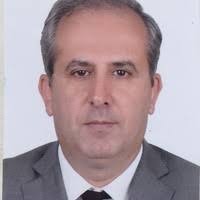
Dr. Mazlum's research and teaching is focused on developing new technological designs and creating alternative feed sources on the production of decapods (especially crayfish). He has more than 23 years of experience in this field to develop crayfish production and management practices. He got his Master and Doctorate degrees from the Department of Fisheries, Fisheries and Wildlife Biology at Clemson University in Clemson, USA. He did a minor in Statistical Sciences at Clemson University






 Web
Web






Editörler Kurulu

Prof. Dr. Ülkü Alver Şahin, İstanbul Üniversitesi-Cerrahpaşa Çevre Mühendisliği Bölümü'nde görev yapmaktadır. Daha önce İngiltere'de Birmingham Üniversitesi ve Kanada'da Carleton Üniversitesi'nde araştırmacı olarak bulunmuştur. Araştırma alanları hava kirliliği ve iklim değişikliği üzerinedir. Prof. Dr. Şahin, Newton Fund (İngiltere), Avrupa Birliği Horizon 2020 Programı, ATLAS ve ATMO-ACCESS TNA Projesi tarafından desteklenen dört uluslararası projede araştırmacı olarak görev almıştır. Ayrıca 25 üniversite-sanayi iş birliği projesinde, 30 TÜBİTAK destekli projede ve 30 üniversite destekli projede yürütücü ya da araştırmacı olarak yer almıştır. Kendisi, Üniversite-Sanayi İş Birliği Araştırma Projesi Birincilik Ödülü, İklim Lideri Ödülü, TÜBİTAK Yayın Teşvik Ödülü ve Üniversite Başarılı Araştırmacı Ödülü gibi çeşitli ödüllere layık görülmüştür. Dr. Şahin'in SCI indeksli dergilerde 50’den fazla yayını ve 1200’ün üzerinde atıfı bulunmaktadır. Ayrıca 13 yüksek lisans ve 3 doktora tezine danışmanlık yapmıştır.








Lisans eğitimini Karadeniz Teknik Üniversitesi Sürmene Deniz Bilimleri Fakültesi Balıkçılık Teknolojisi Mühendisliği Programı’nda, yüksek lisansını ise Balıkçılık Teknolojisi Mühendisliği Anabilim Dalı’nda, Doktora eğitimini Ege Üniversitesi Fen Bilimleri Enstitüsü Su Ürünleri Yetiştiriciliği Anabilim Dalı’nda tamamlamıştır. 1996 yılında Asistan, 2002 yılında Yardımcı Doçent, 2011 yılında Doçent ve 2016 yılında Profesör unvanlarını almıştır. Halen Muğla Sıtkı Koçman Üniversitesi Su Ürünleri Fakültesi Su Ürünleri Yetiştiriciliği Bölümü, Yetiştiricilik ABD’da öğretim üyesi olarak görev yapmaktadır. Uzmanlık alanları arasında su ürünleri yetiştiriciliği, balık besleme, yem teknolojisi, alternatif yem hammaddeleri, organik balık yetiştiriciliği ve su ürünleri ekonomisi gibi konular yer almaktadır.





 Web
Web


https://avesis.omu.edu.tr/gciftci


2004-2014 yılları arasında özel sektörde Veteriner Hekim olarak Pet, Kanatlı ve Büyükbaş hekimliği alanlarında görev yapmıştır. Aynı zamanda 200 koloni arı ile ticari arıcılık faaliyetleri yürütmüştür. Bolu Arı yetiştirici Birliğinin 326 nolu üyesidir. Hobi olarak başladığı kanarya üreticiliğini profesyonel olarak sürdürmüş olup Bolu Ornitoloji derneğinin üyesidir. Doktorasını Ondokuz Mayıs Üniversitesi/Lisansüstü Eğitim Enstitüsü/Dölerme ve Suni Tohumlama (Dr)/ 2021 tamamlayan Özkök, Bal arıları ve ötücü kuşlarda sperma kalitesi, kriyoprezervasyon ve suni tohumlama çalışmalarının yanında Nesli tükenme tehlikesi altında olan yabani ispinoz türlerinin korunabilmesine yönelik alanında çalışmalar ve projeler yapmaktadır.
Katıldığı Sertifikasyon ve Eğitim Programları
Kedi ve Köpeklerde İnfertilite Sorunlarına Güncel Yaklaşımlar ve Uygulamalı Reproduktif Ultrasonografi Eğitim Programı/ ANKARA VETA-D (Eğitimci: Prof. Dr Rıfat VURAL) 08.04.2017
Röntgen Filmi Yorumlama Ve Değerlendirme Workshop Eğitim Programı ANKARA VETA-D (Eğitimci: Prof. Dr. Mustafa ARICAN) 29.05.2016
Deney Hayvanları Kullanım Sertifikası, Ankara Üniversitesi Sürekli Eğitim Merkezi ve Hayvan Deneyleri Yerel Etik Kurulu İşbirliği. 09.02.2015 -18.02.2015
Bal Arısı Islahı ve Yapay Tohumlama Kursu, Tarım köy işleri bakanlığının izniyle ODTÜ Biyoloji bölümünde düzenlenen kraliçe arının ıslahı ve suni tohumlanması kursu, Ankara, Eğitimci: Prof. Dr Aykut KENCE, Prof. Dr Meral KENCE, Dr. Öğr. Üyesi Devrim OSKAY) 02.08.2010-04.08.2010
Ana Arı Yetiştiriciliği, Bal arılarında ana arının üretimi ve kolonilere kabul ettirilmesi, Düzce Üniversitesi Düzce Arıcılık Araştırma, Geliştirme ve Uygulama Merkezi, Kurs, 07.06.2010 -21.06.2010
Sığırlarda Recto-Vaginal Metodla Suni Tohumlama, Büyükbaş hayvanlarda suni tohumlama uygulamaları, Ankara Üniversitesi, Sertifika, 06.12.2004 -10.12.2004
Between 2004 and 2014, he worked as a veterinarian in the private sector in the fields of Pet, Poultry, and Cattle Medicine. He also carried out commercial beekeeping activities with 200 colonies of bees. He is member number 326 of the Bolu Beekeepers Association. He started canary breeding as a hobby and continued professionally, and is member of the Bolu Ornithology Association. Özkök, who completed his doctorate at Ondokuz Mayıs University/Graduate Education Institute/Reproduction and Artificial Insemination (Dr)/ 2021, carries out studies and projects in the field of sperm quality, cryopreservation, and artificial insemination in honey bees and songbirds, as well as studies on the protection of wild finch species that are at risk of extinction.
Certification and Training Programs Attended
Current Approaches to Infertility Problems in Cats and Dogs and Applied Reproductive Ultrasonography Training Program/ ANKARA VETA-D (Trainer: Prof. Dr. Rıfat VURAL) 08.04.2017
X-Ray Film Interpretation and Evaluation Workshop Training Program ANKARA VETA-D (Trainer: Prof. Dr. Mustafa ARICAN) 29.05.2016
Certificate of Use of Experimental Animals, Ankara University Continuing Education Center and Animal Experiments Local Ethics Committee Collaboration. 09.02.2015 -18.02.2015
Honey Bee Breeding and Artificial Insemination Course, Queen bee breeding and artificial insemination course organized in METU Biology Department with the permission of Ministry of Agriculture and Village Affairs, Ankara, Trainer: Prof. Dr. Aykut KENCE, Prof. Dr. Meral KENCE, Asst. Prof. Devrim OSKAY) 02.08.2010-04.08.2010
Queen Bee Breeding, Production of queen bees in honey bees and their acceptance into colonies, Düzce University Düzce Beekeeping Research, Development, and Application Center, Course, 07.06.2010 -21.06.2010
Artificial Insemination in Cattle with Recto-Vaginal Method, Artificial Insemination Applications in Cattle, Ankara University, Certificate, 06.12.2004 -10.12.2004
Dr. Öğr. Üyesi Vildan Zülal Sönmez, 2023 yılından bu yana Düzce Üniversitesi Çevre Mühendisliği Bölümü’nde öğretim üyesi olarak görev yapmaktadır. Akademik kariyerine 2014 yılında İstanbul Üniversitesi Çevre Mühendisliği Bölümü’nde araştırma görevlisi olarak başlamış, 2018-2023 yılları arasında İstanbul Üniversitesi-Cerrahpaşa’da aynı görevini sürdürmüştür.
Yüksek lisans tezinde (2017), tekstil endüstrisi atıksularının akut toksisite üzerindeki etkisini incelemiş; 2023 yılında ise kıyısal alanlarda mikroplastiklerin tespiti, dağılımı, toksisitesi ve giderim mekanizmalarını ele aldığı doktora tezini tamamlamıştır. Araştırmaları; mikroplastiklerin atıksu ve deniz suyu ortamlarında yenilikçi yöntemlerle belirlenmesi, koagülasyon ve elektrokoagülasyon gibi arıtım teknolojileriyle giderilmesi konularına odaklanmaktadır.
Ekotoksikoloji alanında; akut toksisite testlerinin uygulanması, endüstriyel atıksuların toksik etkilerinin belirlenmesi ve hızlı toksisite analiz yöntemlerinin geliştirilmesi konularında uzmanlığa sahiptir. Ayrıca, yerel müsilaj sorunlarına yönelik çözüm odaklı projelerde yer almakta; kutup bölgelerindeki kritik hammaddelerin artışına bağlı çevresel kirleticiler ve bunların toksik etkileri üzerine çalışmalar yürütmektedir. Uzmanlık alanları arasında; ekotoksikoloji, su kirliliği ve kontrolü, sıfır atık yönetimi, plastik ve mikroplastik kirliliği yer almaktadır.
İdari görevleri kapsamında; 2023 yılından itibaren Düzce Üniversitesi Sıfır Atık Yönetimi Koordinatörlüğü'nde Koordinatör Yardımcısı, 2024 yılından itibaren Merkez Laboratuvar Müdür Yardımcısı ve 2025 yılından itibaren ise Çevre Mühendisliği Bölümü Bölüm Başkan Yardımcısı olarak görev yapmaktadır.

Veteriner Mikrobiyoloji Öğretim Üyesi




...



1. Onuk, E.E., Çiftci, A., Findik, A. ve Y.Durmaz “Development and evaluation of multiplex polymerase chain reaction for identification of Flavobacterium psychrophilum, Yersinia ruckeri and Aeromonas salmonicida subsp. salmonicida in culture fisheries.” Journal of Veterinary Science, 11 (3): 235-241. (2010)
2. Özer, S., Börekçi, G., Bulduklu, P., Çiftci, A., Kanık, A. ve E.E. Onuk, “Evaluation of fluorescence in situ hybridization (FISH) and polymerase chain reaction (PCR) for identification of Enterococcus spp. isolated from fish and water.” The Israeli Journal of Aquaculture-Bamidgeh, 63: 643-651. (2011)
3. Onuk, E.E., Çiftçi, A., Fındık, A., Çiftçi, G., Altun, S., Balta, F., Özer, S. ve A.Y. Çoban, “Phenotypic and molecular characterization of Yersinia ruckeri isolates from Rainbow Trout (Oncorhynchus mykiss, Walbaum, 1792) in Turkey.” Berliner und Munchener Tierarztliche Wochenschrift, 124 (7-8): 320-328. (2011)
4. Didinen, B.I., Kubilay, A., Diler, O., Ekici, S., Onuk, E.E. ve A. Findik, “First isolation of Vagococcus salmoninarum from cultured rainbow trout (Oncorhynchus mykiss, Walbaum) broodstocks in Turkey.” Bullettin of The European Association of Fish Pathologists, 31 (6): 235-243. (2011)
5. Durmaz, Y., Onuk, E.E. ve A. Çiftçi, “Investigation of the presence and antibiotic susceptibilities of Flavobacterium psychrophilum in rainbow trout farms (Oncorhynchus mykiss Walbaum, 1792) in The Middle and Eastern Black Sea Regions of Turkey.” Ankara Üniversitesi Veteriner Fakültesi Dergisi, 59 (2): 141-146. (2012)
6. Altun, S., Onuk, E.E., Çiftci, A., Duman, M. ve A.G. Büyükekiz, “Determination of phenotypic, serotypic and genetic diversity and antibiotyping of Yersinia ruckeri isolated from Rainbow Trout.” Kafkas Üniversitesi Veteriner Fakültesi Dergisi, 19 (2): 225-232. (2013)
7. Onuk, E.E., Fındık, A., Turk, N., Altun, S., Korun, J., Ozer, S., Avsever, M.L. ve A. Ciftci, “Molecular identification and determination of some virulence genes of Aeromonas spp. in fish and water from Turkish coastal regions.” Revue de Medecine Veterinaire 164 (4): 200-206. (2013)
8. Altun, S., Onuk, E.E., Çiftci, A., Büyükekiz A.G. ve M. Duman, “Phenotipic, genotipic characterisation and antimicrobial susceptibility determination of Lactoccous garvieae strains.” Kafkas Universitesi Veteriner Fakültesi Dergisi, 19 (3): 375-381. (2013)
9. Pekmezci, G.Z., Bolukbas, C.S., Gurler, A.T. ve E.E. Onuk, “Occurrence and molecular characterization of Hysterothylacium aduncum (Nematoda: Anisakidae) from Merlangius merlangus euxinus and Trachurus trachurus off the Turkish coast of Black Sea.” Parasitology Research, 112 (3): 1031-1037. (2013)
10. Pekmezci, G.Z., Yardimci, B., Onuk, E.E. ve S. Umur, “Molecular characterization of Hysterothylacium fabri (Nematoda: Anisakidae) from Zeus faber (Pisces: Zeidae) caught off the Mediterranean coasts of Turkey based on nuclear ribosomal and mitochondrial DNA sequences.” Parasitology Internatıonal, 63 (1): 127-131. (2014)
11. Didinen, B.I., Yardımcı, B., Onuk, E.E., Metin, S. ve P. Yıldırım, “Naturally Lactococcus garvieae Infection in Rainbow Trout (Oncorhyncus mykiss Walbaum, 1792): New histopathological observations, phenotypic and molecular identification” Revue de Medecine Veterinaire, 165 (1-2): 12-19. (2014)
12. Pekmezci, G.Z., Onuk, E.E., Bolukbas, C.S., Yardimci, B., Gurler, A.T., Açıcı, M. ve S. Umur, “Molecular identification of Anisakis species (Nematoda: Anisakidae) from marine fishes collected in Turkish waters” Veterinary Parasitology 201 (1-2): 82-94. (2014)
13. Yardımcı, B., Pekmezci, G.Z. ve E.E. Onuk, “Pathology and molecular identification of Anisakis pegreffii infection in the John Dory, Zeus faber (Linnaeus, 1758) caught in Mediterranean Sea.” Ankara Üniversitesi Veteriner Fakültesi Dergisi, 61: 233-236. (2014)
14. Didinen, B.I., Metin, S., Onuk, E.E., Takmaz, H. ve A.T. Ersoy, “Isolation and characterization of potential probiotic bacteria from Rainbow Trout Oncorhynchus mykiss, (Walbaum) rearing units against bacterial pathogens.” The Israeli Journal of Aquaculture-Bamidgeh, 66: 1006-10014. (2014)
15. Metin, S., Kubilay, A., Onuk, E.E., Didinen, B.I., ve P. Yıldırım, “First isolation of Staphylococcus warneri from cultured Rainbow Trout (Oncorhynchus mykiss, Walbaum) broodstocks in Turkey.” Bullettin of The European Association of Fish Pathologists, 34(5): 165-174. (2014)
16. Onuk, E.E., Çaycı Y.T., Çoban A.Y., Çiftci A, Balta F, Didinen B.I., Pekmezci G.Z., Altun S., Ünlü M.S., ve A. Deveci, “Türkiye’de su kaynaklı Aeromonas izolatlarında saptanan ilk QnrS gen Pozitifliği.” Mikrobiyoloji Bülteni, 49 (1): 114-123 (2015)
17. Koca S.B.,Yigit N.Ö., Didinen B.I., Metin S., Bayrak H., Onuk E.E., İlhan İ., Eralp H., ve İ. Diler,. “Effects of Enzyme-Producing Probiotic Bacteria Isolated from the Gastrointestinal Tract of Trout on the Growth Performance, Survival and Digestive Enzyme Activity of Rainbow Trout Fry (Oncorhynchus mykiss).” The Israeli Journal of Aquaculture-Bamidgeh, 67: 1190, 10 pages. (2015)
18. Çiftçi, A., Onuk, E.E., Çiftçi, G., Fındık, A., Söğüt M.Ü., ve T. Gülhan, “The comparative analysis of phenotypic and genotypic properties of Aeromonas sobria strains isolated from rainbow trout (Oncorhynchus mykiss, Walbaum, 1972)” Kafkas Universitesi Veteriner Fakültesi Dergisi, 21(4): 585-592 (2015)
19. Muğlalı, ÖH., Salman, M., Gacar, A., Akdağ, F., Gülbahar, MY., Çiftçi, A., Onuk, EE., Karadaş, F., ve H. Eseceli, “In ovo feeding with β-hydroxy β-methylbutyrate on broiler performance, intestinal health and immunity status.” Turkish Journal of Veterinary and Anımal Sciences, 40 (1): 28-33 (2016).
20. Yardımcı, B., Didinen B.I., Onuk, E.E., Metin, S., Çiftçi, A., Kubilay, A., Pekmezci G.Z., ve H. Eralp, “Immunohistochemical evaluation of experimental Vagococcus salmoninarum infection in rainbow trout (Oncorhynchus mykiss, Walbaum 1792).” Journal of Fish Diseases, 39: 547-553, DOİ:10.1111/jfd.12386 (2016).
21. Çiftci, A., Onuk, E.E., Çiftci, G., Fındık, A., Söğüt, M.Ü., Didinen, B.I., Aksoy, A., Üstünakın, K., Gülhan, T., Balta, F., ve S. Altun, Development and validation of glycoprotein-based native-subunit vaccine for fish against Aeromonas hydrophila. Journal of Fish Diseases, 39 (8): 981-992, doi:10.1111/jfd.12499 (2016).
22. Didinen, B.I., Onuk, E.E., ve Sayı H, “In vitro testing of Potential Probiotic Bacteria against Vagococcus salmoninarum in Rainbow Trout (Oncorhynchus mykiss, Walbaum 1792).” The Israeli Journal of Aquaculture-Bamidgeh, IJA_68.2016.1317, 7 pages (2016)
23. Didinen, B.I., Onuk, E.E., Öztürk, T., Metin, S., Öz, M., Çaylı, Ö., ve Kubilay A, “First Report of Chryseobacterium sp. from Koi (Cyprinus carpio) in Turkey.” The Israeli Journal of Aquaculture-Bamidgeh, IJA_68.2016.1341, 8 pages (2016)
24. Onuk, E.E., Çaycı Y.T., Çoban A.Y., Çiftci A, Balta F, Didinen B.I., ve S. Altun, “Balık ve yetiştirme suyu kökenli Aeromonas izolatlarının antimikrobial duyarlılıklarının saptanması.” Ankara Üniversitesi Veteriner Fakültesi Dergisi, 63 (4): 69-73 (2017)
25. Didinen, B.I., Onuk, E.E., Metin, S., Çaylı, Ö. “Identification and characterization of lactic acid bacteria isolated from rainbow trout, (Oncorhynchus mykiss, Walbaum 1792), with inhibitory activity against Vagococcus salmoninarum and Lactococcus garvieae.” Aquaculture Nutrition. 24: 400-407 (2018)
26. Onuk EE, Didinen BI, Ciftci A, Yardımcı B, Pekmezci GZ. “Molecular characterisation of antibiotic resistance in Yersinia ruckeri isolates from Turkey.” Bullettin of The European Association of Fish Pathologists, 39(4): 145-155 (2019)
27. Kubilay A, Didinen BI, Metin S, Onuk EE, Bahadır S, Uluköy G. “First Record of Aeromonas sobria in Yellow Tail Cichlid, Pseudotropheus acei.” Bullettin of The European Association of Fish Pathologists, 40(1): 20-27 (2020)
28. Metin S, Onuk EE, Yardımcı B, Didinen BI. “First report of Candida sake isolated from cultured rainbow trout (Oncorhynchus mykiss, Walbaum) juveniles in Turkey.” Bullettin of The European Association of Fish Pathologists, 40(4): 141-147 (2020)
29. Pekmezci GZ, Yildirim A, Duzlu O, Simsek E, Balta F, Yardimci B, Onuk EE, Onder Z, Ciloglu A, Yetismis G, Yilmaz E, Inci A. (2022). Genetic diversity of Ichthyophthirius multifiliis (Fouquet, 1876) infecting farmed rainbow trout (Oncorhynchus mykiss Walbaum, 1792) in Turkey. Journal of Fish Diseases, 45(8), 1109–1115. https://doi.org/10.1111/jfd.13633
30. Saticioglu I, Onuk EE, Ay H, Ajmi N, Demirbas E, Altun S. (2023). Phenotypic and molecular differentiation of Lactococcus garvieae and Lactococcus petauri isolated fromtrout. Aquaculture, 577 (2023), 739933
31. Taha MD, Didinen BI, Onuk EE, Metin S, Yilmaz S, Mohamed AA, ... & Abdel-Latif HMR. (2023). Identification of four autochthonous yeasts from the intestines of goldfish, Carassius auratus with potential probiotic properties and their effects on the most common fish bacterial pathogens. Microbial Pathogenesis 184 (2023), 106381.
32. Berktaş OÇ, Didinen BI, Onuk EE, Yilmaz S, Abdel-Latif HMR. (2024) Identification of new yeast strains, Candida zeylanoides Y12-3 and Hyphopichia pseudoburtonii Y12-1, from the intestinal tract of rainbow trout, Oncorhynchus mykiss, with potential probiotic characteristics. The Journal of the World Aquaculture Society. https://doi.org/10.1111/jwas.13048





 Web
Web
Doktora derecesini de aldığı, Karadeniz Teknik Üniversitesi Deniz Bilimleri Fakültesi'nde 1990-2003 yılları arasında akademisyen olarak çalışmıştır. Doktora sonrası araştırmalarını, İngiltere’de Plymouth Marine Laboratuvarı (PML)'nda tamamlayan Dr. Nüket Sivri, Doçentlik aşamasında, kıyısal alanların çevresel etkileşimleri ve mikrobiyal değişimler, farklı çevresel ortamlarda antibiyotik direnç mekanizmaları ana başlıklarında proje ve çalışmalar yürütmüştür. Özellikle son 25 yıldır takip ettiği İstanbul kıyısal alanında, antropojenik baskılar ve etkileri konusunda farklı projelerde yürütücü ve araştırmacı olarak görev almıştır. Bölgesel ve küresel ölçekte sucul ekosistemler ile kıyı alanı çevresel etki değerlendirmesi, sucul ekosistemlerde antibakteriyel direnç, su sanitasyonu ve su kalitesi, iç-dış ortam mikrobiyal hava kalitesi ana çalışma konularıdır. Son dönemlerde çalışma ekibi ile dünyada güncel araştırma konuları olan “denizel ekosistemlerde endüstriyel ve evsel atık suların toksisitesinin tespitinde hızlı yöntemler geliştirmek” ve “mikroplastiklerin sucul mikroorganizmalar üzerindeki etkilerini belirlemek” üzerine hem ulusal ve hem de uluslararası nitelikte projelere odaklanmıştır. Dr. Nüket Sivri, Cumhurbaşkanlığı himayelerinde, Sanayi ve Teknoloji Bakanlığı uhdesinde, TÜBİTAK MAM Kutup Araştırmaları Enstitüsü koordinasyonunda gerçekleşen 8. Ulusal Antarktika Bilim Seferi ekibinde yer almış, Antarktika Yarımadası ve Horseshoe Adası'nda çalışmalar yürütmüştür. Bütüncül bir bakış açısı ile ekosistem sağlığını önceleyen "Tek Sağlık" konusunda da çalışmalar yürütmektedir.

Dr. Mazlum's research and teaching is focused on developing new technological designs and creating alternative feed sources on the production of decapods (especially crayfish). He has more than 23 years of experience in this field to develop crayfish production and management practices. He got his Master and Doctorate degrees from the Department of Fisheries, Fisheries and Wildlife Biology at Clemson University in Clemson, USA. He did a minor in Statistical Sciences at Clemson University


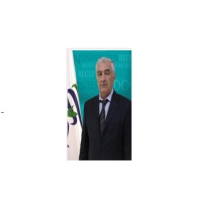






Ahmet Mutlu GÖZLER carried out research for a PhD on the reproduction biology on bivalves. His work includes both the effects of ecological factors on living things and invertebrates. Specialization: (i) Main area Marine Biology. He conducts studies on the distribution of marine invertebrates and the determination of the ecological quality of the seas. (ii) Current research areas invertebrates in the Black Sea and Marine pollution (iii) marine litter and microplastics

https://avesis.erdogan.edu.tr/davut.turan/








 Web
Web

Prof. Dr. İlkay Erdoğan Orhan, Gazi Üniversitesi'nden (Ankara, Türkiye) Eczacı derecesine (1993), aynı Fakültenin Farmakognozi Anabilim Dalı'ndan 1. Yüksek Lisans derecesine (1996) Türkiye Bilimsel ve Teknolojik Araştırma Kurumu (TÜBİTAK) tarafından sağlanan genç bilim insanı bursu ile sahiptir. Ardından, 1998 yılında Japonya'daki Ryukyus Üniversitesi'nde Monbusho bursu ile Deniz Doğal Ürün Kimyası alanında ikinci yüksek lisans derecesini aldı. Doktora derecesini 2002 yılında Gazi Üniversitesi Eczacılık Fakültesi'nde (Ankara, Türkiye) Farmakognozi alanında aldı. NATO-TUBITAK burs programı kapsamında 2003 yılında Winnipeg Üniversitesi (Kanada) Kimya Bölümü'nde doktora sonrası araştırmacı olarak bulundu. Yükseköğretim Kurulu (Türkiye) tarafından 2004 yılında Doçentliğe, 2009 yılında ise Profesörlüğe yükseltildi. Dr. Orhan, 2011-2014 yılları arasında Kuzey Kıbrıs'ta Doğu Akdeniz Üniversitesi Eczacılık Fakültesi Dekanlığı ve 2016-2024 yılları arasında Ankara'da Gazi Üniversitesi Eczacılık Fakültesi Dekanlığı görevlerini yürütmüştür. Dr. Orhan, Temmuz 2024'ten bu yana Lokman Hekim Üniversitesi Eczacılık Fakültesi Dekanı olarak görev yapmaktadır. Avusturya İlaç Araştırma Enstitüsü'nün (ADSI) Uluslararası Bilimsel Değerlendirme Kurulu Başkan Yardımcısıdır.
Dr. Orhan, Genç Kadın Dr. Orhan, OWSD (Gelişmekte Olan Ülkelerde Bilim Kadınları Örgütü) & Elsevier tarafından Asya kıtasında Genç Kadın Bilim İnsanı Ödülü, 2010 yılında COMSTECH (İİT Bilim ve Teknolojik İşbirliği Daimi Komitesi) tarafından Biyoloji alanında Bilim Ödülü, 2011 yılında L'Oreal & Türkiye Bilimler Akademisi tarafından Genç Kadın Bilim İnsanı Ödülü (Yaşam Bilimleri alanında) ve 2011 yılında Gazi Üniversitesi tarafından Onur Ödülü gibi çeşitli ödüller almıştır, 2015'te Türkiye'de Kadın İnovasyon Ödülü, 2016'da Türk Eczacıları Birliği tarafından Bilim Ödülü, 2017'de Eczacılık alanında Altın Havan Bilim Ödülü, 2017'de T.C. Bilim ve Teknoloji Bakanlığı tarafından Uluslararası Buluş Fuarı'nda Patent Gümüş Madalyası ve 2018'de Uluslararası Buluş Dernekleri Federasyonu (IFIA) tarafından En İyi Akademik Buluş Madalyası. Ayrıca 2024 yılında TWAS (Dünya Bilimler Akademisi) Kimya Bilim Ödülü ve Türk Sanayici ve İşadamları Vakfı (TÜSİAV) Üstün Hizmet ve Başarı Belgesi ile Türkiye Vegan ve Sağlıklı Yaşam Turizm Derneği (TEVSAD) & Türk Sanayici ve İşadamları Vakfı (TÜSİAV) & Çevre ve Şehircilik Bakanlığı İklim Elçisi Ödülü'nü almıştır. Türkiye Bilimler Akademisi (TÜBA) asli üyesidir ve 2019-2023 yılları arasında Avrupa Fitokimya Derneği (PSE) Güneydoğu Avrupa ve Türkiye Bölge Temsilciliği görevini yürütmüştür.
SCI-E tarafından listelenen 303 adet bilimsel makalenin, diğer bilimsel dergilerde 47 makalenin, 24 kitap bölümünün, 4 patentin (Türk, ABD ve EP), 6 patent başvurusunun ve 4 kitabın yazarıdır. H indeksi 57 (Web of Science) ve 63 (SCOPUS) olup 17000'den fazla atıf almıştır. Araştırma alanları doğal ürünlerin kimyası ve biyoaktiviteleri, doğal kozmetikler, fitoterapi, spor eczacılığı ve aromaterapidir. Halen Phytomedicine dergisinde Yardımcı Editör olarak görev yapmaktadır.


I am an Associate Professor at the Faculty of Fisheries, Department of Fishing Tecnology Recep Tayyip Erdogan University in TURKEY. I have extensive field and laboratory experience (more than 25 years) in feeding eco-physiology of fish and jellyfish (especially exotic species), fisheries biology . Particular expertise on macrozooplankton feeding physiology experiments and gastric emptying time and rate as well as feeding ecology in fishes.







 Web
Web



Mustafa Turkmen is a full Professor in the Department of Biology, Faculty of Science & Arts, Giresun University. He is head of Department of General Biology. He has 35 years of professional experience in his area. He has successfully organized national and international symposium. He has managed a lot of projects. Mustafa Turkmen has supervised a total of 43 (twenty nine) postgraduate students to completion. Additionally, he is currently supervising a total of twelve (12) postgraduate students. He has published a total of 132 scientific papers that include articles in peer reviewed journals, book chapter and conference proceedings. He has reviewed a lot of papers in peer reviewed journals (in total; 1152). He was awarded as the recognized and outstanding reviewer by Elsevier. Additionally, he has a lot of awards of “Excellence in Reviewing” by Science Domain. His papers were cited in total 3843. He was awarded with “2016 Highly Cited Researchers”, “Publons Peer Review Award as one of the top 10 per cent of researchers contributing to the peer review of the field of Agricultural and Biological Sciences in 2016”, “Publons Peer Review Award-as one of the top 1 per cent of peer review in Multidisciplinary in 2017”, “Publons Peer Review Award-as one of the top 1 per cent of peer review in Agricultural and Biological Sciences in 2018”. He is serving as an editor of several reputed journals. Besides, he is serving as chief editor of “Asian Journal of Advances in Agricultural Research », and « Journal of Wildlife Sciences, Fisheries and Poultry Advancements ». On the other hand, He has edited ten international books. He is dean of Faculty of Engineering of Giresun University. Mustafa Turkmen ranks in Webometrics rankings of Turkish scientists.








 Web
Web
1966 yılında Gümüşhane ili, Torul ilçesinde doğmuş olan Coşkun ERÜZ, ilk ve orta öğrenimini Trabzon’da tamamlamıştır. 1984 yılında KTÜ Sürmene Deniz Bilimleri ve Teknolojisi Yüksek Okulu’ndan başladığı lisans öğrenimini 1988 yılında tamamlayarak Balıkçılık Teknolojisi Mühendisi unvanı ile mezun olmuştur. Aynı üniversitenin Fen bilimleri enstitüsünde, yüksek lisans öğrenimini 1992 yılında tamamlamıştır. Aday aynı Enstitüde doktora öğrenimini 1999 yılında tamamlayarak doktor ünvanını almıştır. Sürmene Deniz Bilimleri Fakültesi, Balıkçılık Teknolojisi Mühendisliği Bölümünde Araştırma Görevlisi olarak, 1991 yılında atanmış , 1999 yılında aynı bölümde yardımcı doçent olarak göreve başlamız, 2023 yılında Deniz Bilimleri ve Teknoloji Mühendisliğin de Göreve Başlamış, 2019 yılında Doçent, 2022 yılında profesör olarak aynı bölümde göreve devam etmektedir. İdari olarak bölüm başkan yardımcılığı ve , dekan yardımcılığı görevleri yanında pekçok idari komisyonda vede fakülte kurulu ve yönetim kurulunda görev almıştır. Fiziksel Oşinografi, Deniz Kirliliği, Kıyı alanları , kıyı yapıları ve yönetimi, deniz meteorolojisi konularında eğitim ve araştırma, yayın çalışmaları bulunmaktadır.
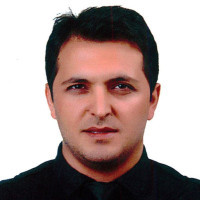



Cüneyt Kaya, Recep Tayyip Erdoğan Üniversitesi Su Ürünleri Fakültesi'nde görev yapan bir balık taksonomistidir. Tatlı su balıkları, hem akademik hem de kişisel olarak onun temel ilgi alanını oluşturmaktadır ve bu alanda kariyer yapma isteğiyle her zaman güçlü bir motivasyona sahip olmuştur. Başlıca ilgi alanları, tatlı su balıklarının korunması, çeşitliliği ve dağılımıdır. Araştırmaları ayrıca, istilacı türler ve habitat değişiklikleri gibi ekolojik değişimlerin sucul fauna üzerindeki etkilerine de odaklanmaktadır. Kariyeri boyunca, hakemli bilimsel dergilerde 80’in üzerinde makale yayımlamış ve 50 yeni tatlı su balığı türünü tanımlamıştır.



İzmir’de doğan Ülgen AYTAN 1999 yılında KTÜ Su Ürünleri Fakültesinden mezun olmuş, Su Ürünleri ABD’de 2008 yılında yüksek lisansını ve KTÜ Balıkçılık Teknolojisi Anabilim Dalında 2012 yılında Plankton Ekolojisi alanında doktorasını tamamlamıştır. Aynı yıl YÖK aldığı doktora sonrası araştırma bursu ile 1 yıl süre ile Plymouth Marine Laboratory’de Plankton Ekolojisi alanında post-doc yapmıştır. Doktora sonrası araştırmalarına aynı kurumda British Council’den aldığı bursla devam etmiştir. 2013 yılından beri RTEÜ Su Ürünleri Fakültesi Deniz Biyolojisi Anabilim Dalında Öğretim Üyesi olan Ülgen AYTAN, 2018 yılında Doçentlik ünvanını almıştır. Fitoplankton ve zooplankton ekolojisi alanında 15 yıldan fazla deniz ve laboratuvar deneyimi ile çeşitli deniz ekosistemlerinde (örneğin, Karadeniz, Batı Manş Denizi ve Atlantik) plankton deneyleri ve topluluk dinamikleri konusunda uzmanlığa sahiptir. 2013'ten bu yana deniz çöpleri ve Mikroplastikler, etkileri ve kontrol yöntemleri üzerinde çalışmaktadır. RTEÜ Mikroplastik Araştırma Grubunun (PLASTON- PLAStic and PlankTON Research) lideridir. Tübitak tarafından desteklenen birçok proje de yürütücülük yapmış/yapmaktadır ve bakanlıklar tarafından Türkiye tatlı su ve deniz ekosistemlerinde mikroplastiklerin izlenmesi projelerinde araştırmacı olarak yer almaktadır. Cost Aksiyonu "Plastics Monitoring Detection Remediation Recovery" (CA20101) Yönetim Kurulu Üyesidir. Deniz çöpü/Mikroplastikler Konusunda Ulusal Uzman olarak Türk Deniz Çevresi Stratejisi ve Kılavuzlarının hazırlanmasına aktif rol oynamıştır. AB Deniz Stratejisi Çerveve Direktifi (MSFD) Deniz Çöpleri Teknik Grubu (TGML) ve Avrupa Çevre Ajansı ile Avrupa Bölgesel Denizlerinde Deniz Çöplerinin İzlenmesinde Uzman olarak yer almıştır. Türk Deniz Araştırmaları Vakfı (TÜDAV) Yönetim Kurulu Üyesidir. Ülkemiz denizlerinde plastik kirliliği ve etkileri hakkında katıldığı TV/Radyo programları ile bu konuda farkındalığın oluşturulmasına katkı sağlamaktadır. Deniz çöpleri ve mikroplastik kirliliği üzerine İki
doktora öğrencisinin danışmanlığını yapmaktadır.
Dergi Yayın Kuralları Editörleri (Önkontrol)






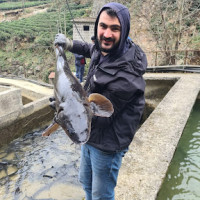




Biyoloji alanında doktora derecesine sahibim. Araştırmalarım deniz ve tatlı su ekosistemleri, hidrobiyoloji, su kalitesi değerlendirmesi ve makine öğrenimi ve yapay sinir ağları kullanılarak çevresel parametrelerin tahmini üzerine odaklanmaktadır. Disiplinlerarası yaklaşımlar aracılığıyla çalışmalarım, su ekosistemlerinin izlenmesi ve korunmasını geliştirmeyi amaçlamaktadır.
JAES, 2016- 11.yıl
